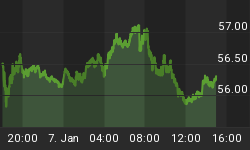Equity income has the potential to grow. Bond income does not. Investors with an income orientation should have at least some level of equity income to supplement fixed income from bonds to keep up with the cost of living. Inflation is the inevitable long-term outcome of monetary and fiscal policy (current deflation notwithstanding).
When selecting stocks for equity income, the choices should be high quality and with yield characteristics that generate more income than the same amount invested in a broad index, such as the S&P 500.
Remember that individual stocks have issue specific risks that are massively mitigated by the diversification of an index, so there is some added risk that comes with the added income that might be derived from individual stocks.
Here's what we did today.
First, we determined the threshold requirements based on the performance of the S&P 500 through its proxy SPY. Then we identified financially strong companies that had current and prospective yields equal to or higher than SPY.
For financial strength, we selected those US listed companies rated highly for financial strength by either Standard & Poor's or Value Line. That gave us a list of just under 600 companies out of the thousands they rate. Do note that if they did not rate a company, it could not be in this list -- that tended to limited partnerships and royalty trusts, for example, some of which we like for equity income.
Then we studied the yield of SPY. On a rolling 4-quarter basis, SPY yields about 2.7%.

However, dividends have gone down recently and potentially could be restored soon (not likely, but we assume that to make the threshold test stricter).
If we use the peak dividends from before the current economic problems, the SPY yield on its current price, would be about 3.1%. Looking at 10 years of dividend growth, we see that it has been about 6% (including the current period). When we compound 3.1% out three years we get 3.7% yield on the current price (based on the current 2.7% yield, compounding at 6% would only bring the yield on the current price up to 3.2%).
We set the minimum current yield threshold for individual stocks (among those judged to financially strong by S&P or Value Line) at 2.7%; and we set the threshold at 3.7% three years into the future based on compounding the current indicated dividend by the 3-year dividend growth rate. If the 3-year dividend growth rate was over 20%, we assumed the rate is unsustainable and we capped it at 20%. We also required that the 3-year historical growth rate for dividends be no less than 3%.
From those filter rules, we ended up with 201 companies that might be the core universe for a research effort toward building an equity income component for a portfolio.
Here is a large image (1.1 MB and 40 inches tall) of the list organized by sector and industry. You may find a gem or two in that list after you do your own additional study. All are equal to or better than SPY in current and prospective yield, based on current dividend and past dividends growth rates. Presumably they have a higher average financial strength than SPY because of the diligence by S&P or Value Line -- but they lack the diversification of SPY.
Good hunting.
Disclosure: We may own some of the stocks in the filtered list from time-to-time.


















